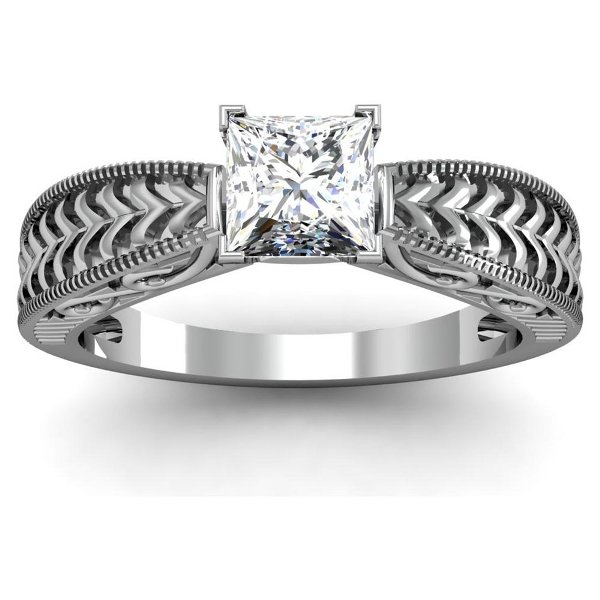Buying a vintage ring however can be a real minefield when you don’t have specialist jewellery knowledge. There is such a vast choice available and making the right decision can be confusing, especially when purchasing via the Internet.
Having an idea of the era that best suits your style, taste and budget then narrowing down your search from there is a good idea, and will make your selection process more straight forward. Here is our guide to recognising the appearance of jewellery from different time periods, and choosing which suits you best:
Victorian
As the oldest of these eras Victorian jewellery is the most difficult to find and also most likely to be expensive. The style of Victorian jewellery is very romantic, and as the diamond mines opened in Africa in the 1870s diamonds became more affordable, resulting in engagement ring styles commonly featuring diamonds spanning the whole or half of the ring. If you love a sparkly eternity style ring this is the right era for you!
Edwardian
If you are after a feminine and luxurious style of ring, this is the right time period for you. In the late 1890s to early 1910s technology was improving, and diamonds, exotic gems and pearls are set into intricate mounts. They are dainty and elegant. All engagement rings were made in platinum, so if you find a ring that isn’t you know it isn’t actually from the Edwardian period.
Art Deco
Unusual geometric patterns and bold shapes with an architectural feel were common from 1915 – 1935, and white gold was introduced. Emeralds, sapphires and rubies were popular and often featured in engagement rings.
Intricate Filigree settings typified this most creative period of jewellery manufacture, unparalleled in the jewellery of today. If you love the romance and excitement of the jazz era and roaring twenties as seen in the styling of ‘The Great Gatsby’ film this could be the era of engagement ring for you.
Retro
This era of jewellery (1935 – 1960) may hold particular resonance to you as the time period of your mother and grandmother’s engagement ring, but doesn’t have a particularly distinctive style all of its own.
Diamonds were set in white or more commonly yellow gold, and Platinum was unavailable to jewellers for much of this time. Engagement rings were designed to make an impact with the limited resources of war time Britain, with solitaire diamonds often set into illusion heads, making round diamonds look square and larger in size.
If you are a fan of jewellery makers like Tiffany and Co, Van Cleef and Arpels and Cartier they were really making their mark at this time. If you are looking for that 1950s Hollywood look this era could be for you.
